#cyril luckham
Text
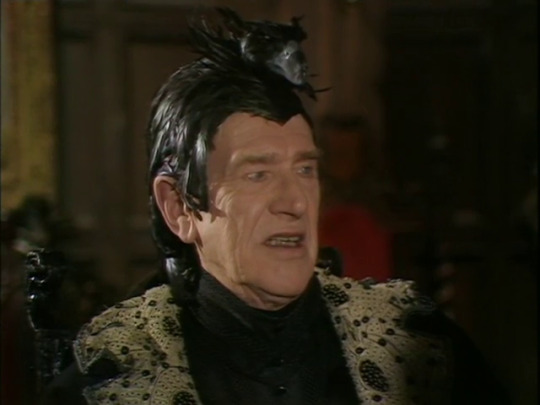


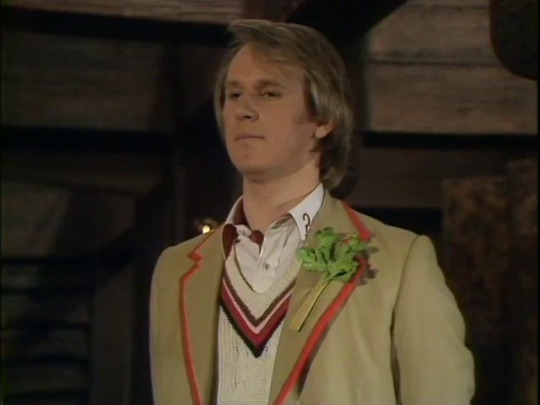

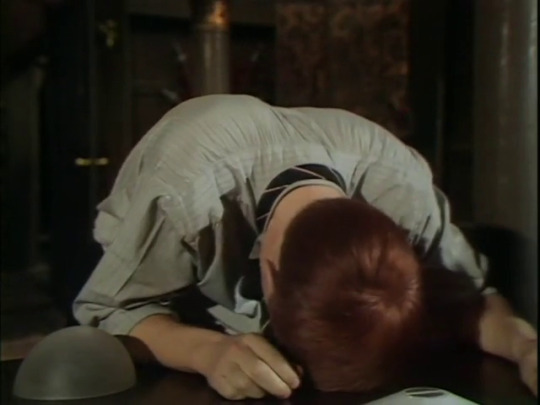
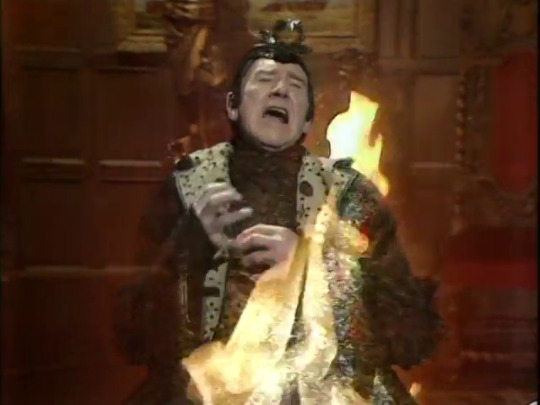
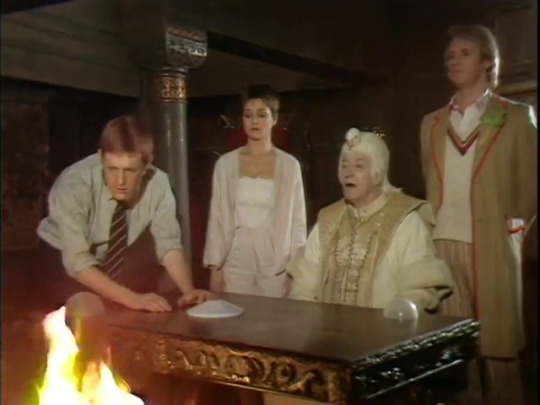
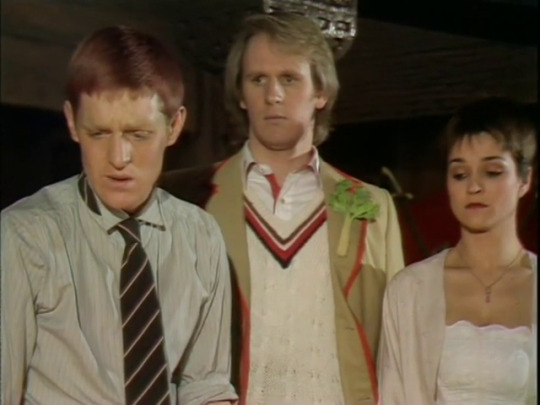
Enlightenment Episode 4 Screencaps, Part 16
#classic doctor who#5th doctor#tegan jovanka#vislor turlough#black guardian#white guardian#peter davison#janet fielding#mark strickson#valentine dyall#cyril luckham#enlightenment#screencaps#screenaps
28 notes
·
View notes
Photo






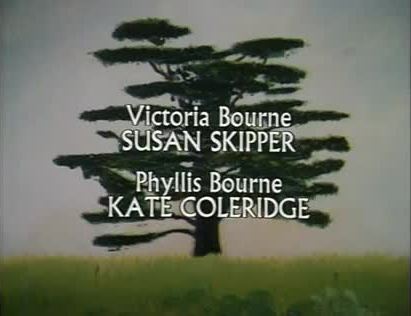
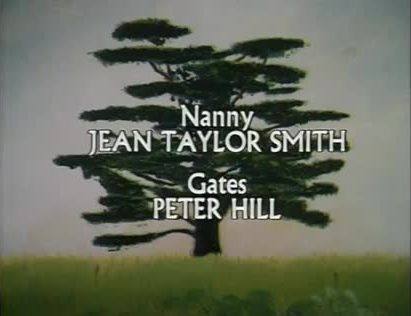

The Cedar Tree - ITV - September 20, 1976 - September 24, 1978
Melodrama (119 episodes)
Running Time: 30 minutes / 60 minutes in 1978
Stars:
Joyce Carey – Lady Alice Bourne, widowed mother of Arthur and Phyllis
Philip Latham – Commander Arthur Bourne (series' 1 & 2)
Susan Engel – Helen Bourne, Arthur's wife
Sally Osborne – Elizabeth Bourne, eldest daughter of Arthur & Helen Bourne
Jennifer Lonsdale – Anne Bourne, middle daughter of Arthur & Helen Bourne
Susan Skipper – Victoria Bourne, youngest daughter of Arthur & Helen Bourne
Kate Coleridge – Phyllis Bourne, Arthur's sister
Cyril Luckham – Charles Ashley, father of Arthur's wife Helen
Gary Raymond – Jack Poole
Carol Royle – Laura Collins, friend of Victoria
Jean Taylor Smith – Nanny
Peter Hill – Gates, the Bourne's chauffeur and general help
Ruth Holden – Mrs. Gates, the Bourne's housekeeper
Shaun Scott – Jim Tapper, assistant to Gates
Alan Browning series 1 & 2/Richard Thorp series 3 – Geoffrey Cartland
Lillias Walker – Rosemary Cartland
John Oxley – Peter Cartland
Tom Chatto – Parsons, the Cartland's butler
John Hug – Gwylym Meredith-Jones
Joan Newell – Winifred Hedges
Patrick Ryecart/Steven Pacey – Klaus Von Heynig
Nigel Havers – Rex Burton-Smith
Jack Watling – Captain Julian Palmer (series 2) / Commander Arthur Bourne (series 3)
Rosemary Nicols – Angela Scott, magazine reporter
Michael Macowan – Doctor Cropper
Pamela Mandell – Miss Pringle, owner of the Copper Kettle tearooms
Richard Vernon – Lord Evelyn Forbes, old flame of Lady Alice Bourne
Peter Egan – Ralph Marsh
#The Cedar Tree#TV#Melodrama#1970's#ITV#Joyce Carey#Philip Latham#Susan Engel#Sally Osborne#Jennifer Lonsdale#Susan Skipper#Kate Coleridge#Cyril Luckham#Gary Raymond#Peter Hill#Jean Taylor Smith
3 notes
·
View notes
Text
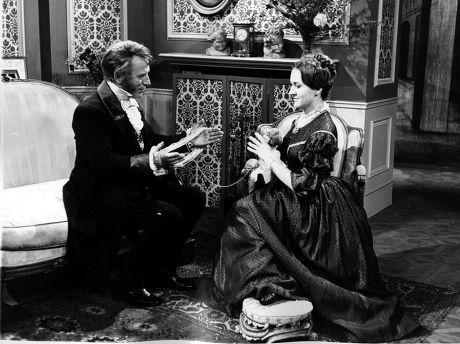

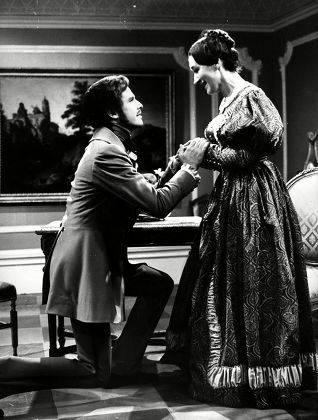
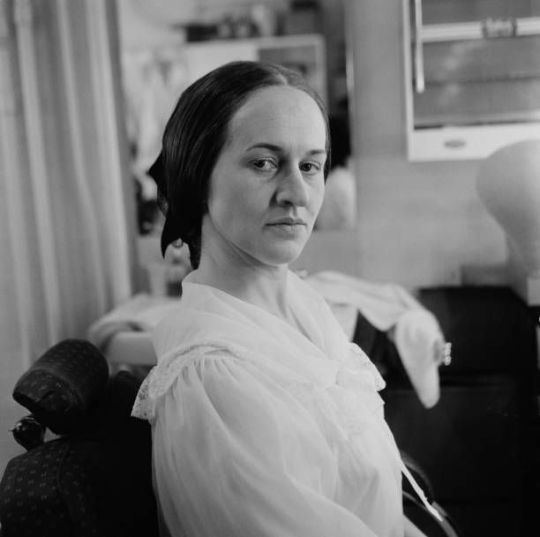
Victoria Regina: Spring (1.1, Granada, 1964)
"I don't know what to think of it."
"It, meaning what?"
"Female. On the throne. King would have been so much better."
"Oh, I don't know, my lord: heirs male of the last generation have not been a conspicuous success."
"No English king has been a conspicuous success since Edward I."
"Yet the monarchy has gone on."
"Yes. And it's gone off."
#victoria regina#spring#granada#classic tv#1964#laurence housman#peter wildeblood#stuart latham#patricia routledge#joachim hansen#geoffrey dunn#max adrian#michael bilton#cyril luckham#miles malleson#marianne deeming#nicholas courtney#humphrey morton#ann way#michael wolf#finding myself in something of a Saint burnout I turned to this 4 part mini series from 1964 to freshen my brain. ah good old granada‚#could you be further from the uneasy gloss and polish of ITC? immediately we open on drabby little sets and actors stumbling over their#lines. feels like.. home. based on the play by Housman‚ a fascinating figure (more or less openly gay at a very dangerous time to be so‚#and a passionate supporter of womens suffrage who produced art and propaganda for the cause and was arrested at rallies) the play had been#adapted for American tv a couple of years earlier‚ but the text dated back to 1934 and it's surprising how fresh and modern it feels#almost certainly that's a reflection of Housman's progressive sensibilities. this is no simple hagiography but a study of what it meant for#a woman to be crowned in England in that time. Routledge is superb as the young queen‚ an apparent innocent in the ways of courtly politics#and deferential to her male advisors; but beneath it just the beginnings of a sense of steel at her centre‚ an unwillingness to bend or to#otherwise compromise on a point of principle. also excellent is Cyril Luckham‚ nearly unrecognisable beneath a dashing wig‚ as Victoria's#first PM Lord Melbourne. history has not been especially kind to Melbourne‚ but if he was anything like Luckham's kindly uncle he was ok
9 notes
·
View notes
Text
'Bad Wolf, Torchwood, Saxon... now "The One Who Waits" appears to be joining the ranks of Doctor Who story arcs teased by writer/showrunner Russell T Davies.
The Giggle – the third and last of the show's 60th anniversary specials – saw the Doctor (David Tennant) once again face off with old foe The Toymaker (now played by Neil Patrick Harris).
The events of previous episode Wild Blue Yonder saw the Doctor unwittingly allow the Toymaker – an elemental force who exists beyond the rules of the universe – entry into our universe.
In The Giggle, the cruel Toymaker was able to provoke the Doctor into challenging him to a game – as the two prepared to match wits, the villain taunted the Time Lord with tales of his accomplishments.
"I came to this universe with such delight," he said. "I played them all, Doctor – I toyed with supernovas, turned galaxies into spinning tops, I gambled with God and made him a jack-in-the-box."
We even discover that The Master – last played by Sacha Dhawan in last year's The Power of the Doctor – fell foul of the Toymaker, losing a game to the villain and ending up trapped, apparently for all eternity.
But then, the Toymaker makes a confession: "There's only one player I didn't dare face – The One Who Waits.
"I saw it, hiding, and I ran."
The Doctor attempts to question the Toymaker further, but he shrugs off his earlier comments, telling his nemesis: "That's someone else's game."
So who is The One Who Waits?
The Toymaker is established as having power almost without limit, able to manipulate the atoms of the universe and conjure up his own magical domain – in The Giggle, we saw a shaken Doctor uncertain if he'll be able to best his enemy once again.
The fact then that, whoever or whatever they are, The One Who Waits is capable of striking fear into the heart of the Toymaker is pretty terrifying. Could an even more powerful being exist in the Whoniverse?
Interestingly, in a social media post made in October, the official Doctor Who account appeared to refer to the Toymaker himself as "the one who waits" – but it's made clear in The Giggle that he's referring not to himself but to some other figure.
Of course, the Toymaker isn't the only all-powerful, ever-living being to exist in the worlds of Doctor Who...
Making their debut in the 1983 story Enlightenment, the Eternals are a race of elemental beings of immense power, capable of manipulating matter and creating objects out of thin air.
These amoral creatures act purely for their own amusement, manipulating "Ephemerals" (read: mortal beings) for fun.
Then there are the Guardians, who first appeared in Doctor Who's 16th season in 1978, a series of interlinked stories which saw the Fourth Doctor (Tom Baker) on a quest to find the legendary Key to Time.
Transcendental beings who embodied aspects of the universe, immortal and indestructible, we met the White Guardian (Cyril Luckham) – who represented light, order and structure – and his eternal opponent the Black Guardian (Valentine Dyall) – the personification of darkness, entropy and chaos.
Most recently, 2020 episode Can You Hear Me? saw the Doctor (Jodie Whittaker) and friends lured into a trap by Zellin (Ian Gelder), an immortal "god" who was haunting the dreams of humans, all to feed his beloved Rakaya (Clare-Hope Ashitey).
Could one of these creatures, or something like them, be "The One Who Waits"?
It's also possible, of course, that Russell T Davies has invented an entirely new menace. In the episode The Star Beast, The Meep (voiced by Miriam Margolyes) revealed itself to be in the employ of a figure it referred to as "the boss".
David Tennant later admitted that he remains oblivious to the identity of "the boss", which suggested that this reveal would be held back until Ncuti Gatwa's time in the TARDIS.
The Meep's admission and the Toymaker's confession in The Giggle could be the start of something much larger and entirely unexpected...'
#David Tennant#Doctor Who#The Star Beast#Wild Blue Yonder#Russell T. Davies#The Meep#Miriam Margolyes#Ncuti Gatwa#The Giggle#60th Anniversary#Neil Patrick Harris#The Toymaker#The Master#Sacha Dhawan#The Power of the Doctor#Can You Hear Me?#Zellin#Bad Wolf#Torchwood#Saxon#the Eternals#Enlightenment#The Guardians#Tom Baker
12 notes
·
View notes
Photo
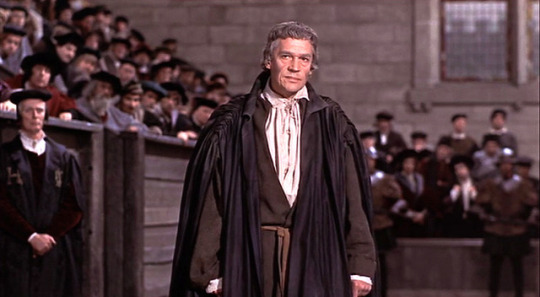
A Man for All Seasons (1966)
The province of British royal dramas has proved a resilient dramatic subgenre since the earliest days of filmmaking. In the twilight of the major movie studios churning out such films on a regular basis came Fred Zinnemann’s A Man for All Seasons, based on the 1960 Robert Bolt play of the same name (Bolt adapted his own play for the film). Zinnemann wrestled with a Columbia Pictures studio without a guiding leader following the death of Harry Cohn in 1958 and suffering from a lack of box office success after 1962′s Lawrence of Arabia. So Zinnemann accepted a smaller budget than one might expect for a royal drama, shielding his production from executive interference as a result. And against Columbia executives’ predictions that A Man for All Seasons would quickly be forgotten, the film became as popular with critics as it was with audiences – could you imagine a royal drama accomplishing that today? – as its literate dialogue and splendid acting emphasize the moral and religious dilemma at the movie’s center.
A Man for All Seasons begins in 1529 and concludes in 1535 – midway through the reign of King Henry VIII of England. Sir Thomas More (Paul Scofield) is appointed by Henry VIII (Robert Shaw) to replace the late Cardinal Wolsey (Orson Welles) as Lord Chancellor of England (at the time, the position served as the head of the English judiciary). Henry is seeking to annul his marriage to Catherine of Aragon (his first of eight wives) – who produced no surviving sons – in order to marry Anne Boleyn (Vanessa Redgrave in a memorable cameo). The lack of a male heir could result in civil war, but More refuses to consent to the King’s plans. More, loyal to the Catholic Church (Henry will appoint himself the leader of the newly-created Church of England in 1531), remains steadfast in his opinions as the King’s men (most notably Leo McKern as Thomas Cromwell) attempt to undermine the new Lord Chancellor.
Also important to the film’s narrative are Alice Moore (Wendy Hiller); daughter Margaret More (Susannah York); the Duke of Norfolk (Nigel Davenport); Richard Rich (John Hurt in his first film role of significance); and William Roper the Younger (Corin Redgrave).
Fourteen years earlier, Fred Zinnemann directed Gary Cooper in the 1952 Western High Noon – Coop played an imminently-retiring U.S. Marshal who must defend his town one final time before departing with new bride. Despite the bride’s Quaker pacifism, the Marshal remains steadfast in his principles to defend the townspeople, with violence if necessary. A Man for All Seasons is High Noon as an English royal drama (and vice versa, respective of mid-sixteenth century England and the Old West’s justice systems). Zinnemann’s filmmaking and Robert Bolt’s screenplay examine an issue non-negotiable to the heart and mind of a solitary man. To what lengths will a person go to defend those values and, in the contestation of those values, how do they reconcile with any lingering or last-minute doubts they possess? Contemplating his Catholic faith and his sworn duties to the Crown, it is up to More to decide where to stake his identity and to follow a course of action that he believes is not only clearest for his conscience, but what he thinks is right. As More describes to his wife:
SIR THOMAS MORE: If we lived in a state where virtue was profitable, common sense would make us saintly... anger, pride, and stupidity commonly profit far beyond charity, modesty, justice, and thought; perhaps we must stand fast a little – even at the risk of being heroes.
MARGARET MORE: But in reason!
SIR THOMAS MORE: ...it isn’t a matter of reason... it’s a matter of love.
More’s reasonings, beyond what has already been mentioned, are decidedly religious, even if he keeps his spirituality to himself – revealing only when asked and challenged in passionate argument. His attachment to the material, earthly things are fleeting; his connection to God is not (as opposed to John Hurt’s unscrupulous Richard Rich). The final arguments can best be understood in More’s concluding remarks following the trial verdict. His resolve is unimpeachable, his soul hardened.
Robert Bolt’s play and his adapted screenplay adopt a fervent anti-authoritarian message that decries leaders overstepping their bounds and reacting negatively to criticisms and embarrassments. With the West awash in counterculture and distrust in governmental and military institutions (not necessarily anti-authoritarianism), A Man for All Seasons resonated with a larger swathe of people of different ages and political ideologies than Columbia’s unwitting executives might have projected. The major change from Bolt’s stage play is that he eliminates a character named the Common Man – a Greek Chorus-like figure who represents the powerlessness of the average English subject at the time and to establish the play’s setting (like a more interventionist Stage Manager from Thornton Wilder’s Our Town). Bolt’s decision to eliminate the Common Man makes some sense– the 1940 adaptation of Our Town directed by Sam Wood kept the Stage Manager, and it does not negatively impact the film – but the film loses that connection to how ordinary subjects felt about Henry’s schemes and More’s resistance. The adaptation to A Man for All Seasons loses that framing device, focusing almost entirely on Sir Thomas More and Henry’s agents. Perhaps a Greek Chorus-like character might be more theatrical than cinematic, but perhaps a composite character(s) could have allowed audiences a better understanding of how those without power interpreted events and thought of their King’s actions.
Thanks to those decisions, A Man for All Seasons feels like a Great Man Biopic that is gifted with a bravura performance from Paul Scofield. As it happens so often in Hollywood (in a strange coincidence, A Man for All Seasons is the second-straight movie I have written about this non-problem that becomes a problem), Scofield – primarily a stage actor and the originator of the part of Thomas More – was third choice to reprise the role he played on West End and Broadway behind Richard Burton (declined) and Laurence Olivier (who lobbied Zinnemann to cast Scofield). In only his fourth film, Scofield gives a seasoned professional’s performance in the movie’s most refined, unquestionably nuanced part. Portraying More with outstanding confidence and, by the narrative’s end, an acceptance of his likely fate, how lucky audiences are that Scofield’s performance of a lifetime has been preserved on film and is not confined to the memories of theater attendees and critics.
Shot on location in palaces and estates in rural England (in addition to the famous Shepperton Studios’ soundstages), cinematographer Ted Moore (seven James Bond movies from 1962′s Dr. No to 1974′s The Man with the Golden Gun) keeps his static camera at a healthy distance, bolstering the lushness of the setting and implying that More is resisting King Henry VIII for a cause greater than himself. Costume designers Elizabeth Haffenden (1959′s Ben-Hur, 1971′s Fiddler on the Roof) and Joan Bridge (1969′s The Prime of Miss Jean Brodie, Fiddler on the Roof) take advantage of the Technicolor when they can, straying away from the many browns and grays of the interiors – King Henry VIII’s robes are ridiculously gold and gaudy.
After shooting was completed, Fred Zinnemann recalled that A Man for All Seasons was the easiest film he ever made, in part due to the expertise of his cast and his crew. The weather, too, proved miraculous. For one snowy scene in which the Duke of Norfolk visits an ailing Wolsey, Zinnemann had trucks of styrofoam brought in to simulate the snow. But as soon as they arrived, the temperature dipped, and the snow started falling. It stopped immediately after completion of the scene and melted right away. Elsewhere, the outdoor confrontational scene between Scofield and Shaw’s Henry VIII is filled with wind gusts whenever Henry becomes irritated. And after Zinnemann called the film shoot to a close after twelve weeks, it rained where filming took place weeks afterward. Divine intervention or nature of royal clemency may have been too late to save Thomas More, but at least all of those factors except the last one certainly accommodated A Man for All Seasons.
A bit stolid and dry, A Man for All Seasons depicts an individual who lives up to the title in his unbending respects for himself and his beliefs. Though it is not fixated on Henry VIII himself, I would not hesitate to consider the film to be one of the better royal dramas ever released by a major American film studio and, even to a slight degree, an excellent film on faith.
My rating: 8/10
^ Based on my personal imdb rating. My interpretation of that ratings system can be found here.
#A Man for All Seasons#Fred Zinnemann#Paul Scofield#Wendy Hiller#Leo McKern#Orson Welles#Robert Shaw#Susannah York#Nigel Davenport#John Hurt#Corin Redgrave#Colin Blakely#Cyril Luckham#Vanessa Redgrave#Robert Bolt#Ted Moore#Elizabeth Haffenden#Joan Bridge#TCM#My Movie Odyssey
2 notes
·
View notes
Photo










A Man for All Seasons (1966) Director - Fred Zinnemann, Cinematography - Ted Moore “If we lived in a State where virtue was profitable, common sense would make us good, and greed would make us saintly. And we’d live like animals or angels in the happy land that /needs/ no heroes. But since in fact we see that avarice, anger, envy, pride, sloth, lust and stupidity commonly profit far beyond humility, chastity, fortitude, justice and thought, and have to choose, to be human at all… why then perhaps we /must/ stand fast a little –even at the risk of being heroes.”
#scenesandscreens#a man for all seasons#paul scofield#robert shaw#orson welles#wendy hiller#leo mckern#john hurt#susannah york#nigel davenport#vanessa redgrave#corin redgrave#colin blakely#yootha joyce#cyril luckham#jack gwillim#thomas heathcote#anthony nicholls#eira heath#john nettleton#michael latimer#molly urquhart#paul hardwick#eric mason
46 notes
·
View notes
Photo










Anne of the Thousand Days (1969), dir. Charles Jarrott.
#anne of the thousand days#charles jarrott#film#geneviève bujold#richard burton#irene papas#anthony quayle#john colicos#michael hordern#william squire#joseph o'conor#cyril luckham#peter jeffrey#esmond knight#henry the eighth#1500s#1960s movies
17 notes
·
View notes
Photo






“Eternal chaos?”
The Ribos Operation - season 16 - 1978
#doctor who#classic doctor who#classic who#fourth doctor#tom baker#the ribos operation#the white guardian#cyril luckham#the key to time
161 notes
·
View notes
Photo

A MIDSUMMER NIGHT S DREAM by Shakespeare Cyril Luckham (Quince) Ian Holm (Puck) Charles Laughton (Bottom) Producer: Peter Hall Shakespeare Memorial Theatre Stratford-on-Avon June 1959
@superkingofpriderock @ardenrosegarden @amalthea9
#a midsummer night's dream#charles laughton#ian holm#sir ian holm#royal shakespeare company#shakespeare#comedies#theater#literature#bardolatry#rsc
8 notes
·
View notes
Text
The Guardians
The Guardians was a television series made by London Weekend Television and broadcast in the UK on the ITV network between 10th July 1971 and 2nd October 1971. It ran for 13 episodes.
It is set in a dystopian 1980’s Great Britain and through the series we follow the economic chaos that occurs after the democratic government has been overthrown in a bloodless coup, the Royal Family have fled into…
View On WordPress
#Cyril Luckham#Derek Smith#featured#ITV network#London Weekend Television#The Guardians#Wilfred Josephs
0 notes
Text
Doctor Who: Flux – Is Barbara Flynn’s Awsok The White Guardian?
https://ift.tt/3DftIse
Warning: Contains spoilers for Doctor Who: Flux Episode 3 ‘Once, Upon Time’
Any little pig will tell you that straw is no basis on which to build. Keep that in mind when, in a little bit, it’s put to you that a new mysterious character in Doctor Who might actually be an old mysterious character from Doctor Who on the basis of a straw hat. Fair warning given. (Not all fan theories can be zingers, but we’ve still got to have them, if only to give us all something harmless to consider between episodes while nibbling the chocolate from around the wafer bit of a KitKat.)
The really silly part of all this is that the straw hat in question is by far the least memorable headwear worn by Doctor Who character The White Guardian. Yes, that’s what he wears in his first on-screen appearance in 1978’s ‘The Ribos Operation’, but by 1983’s ‘Enlightenment’ he’d upgraded quite significantly to a hat made out of bird. Or perhaps it’s more of a wig made out of bird. Or perhaps it’s a pet. Either way, there’s a head and a beak and feathers and two eyes and the startling impression that this bird collided with this head at great speed and by the look on its face, was rather surprised to have done so.
Enough about the bird. In Doctor Who: Flux episode ‘Once, Upon Time’, the Doctor is inside her own time stream pleading with the Mouri to let her stay and watch one more episode from her past. This is the most she’s ever found out about her pre-Hartnell life as an agent of The Division since her memories were wiped, and she’s desperate to know more. The problem is, her body can’t stick it any longer. The Mouri force her out, but not before she’s sucked away to be told off by a mysterious woman.
This woman, played by Barbara Flynn, is credited in the episode as Awsok. The Doctor doesn’t know that name, or who or when or where it belongs, but Awsok clearly knows the Doctor and is not a fan. Awsok is able to pluck the Doctor out of her time stream and dismiss her at will. Who else can do that? Well, as the Fourth Doctor says when he asks himself the same question after being summoned from his TARDIS by a bright light and ecclesiastical music in ‘The Ribos Operation’: “Only a Guardian…Oh!” A Guardian can do that.
“There are times, Doctor, when the forces within the universe upset the balance to such an extent that it becomes necessary to stop everything, for a brief moment only, until the balance is restored.” – The White Guardian, ‘The Ribos Operation’.
Depending on what you believe, the Guardians of Time either number two or six and were created by Time Lord Rassilon or The Great Old Ones/The Grace. They can change their appearance at will and were made to hold the universe together and keep its elemental forces in equilibrium. The ones we care about here are the White Guardian and the Black Guardian. The former is in charge of light and order and good and while the latter is in charge of darkness and chaos and evil – or, depending on your moral perspective, the first does control, the second does freedom.
Read more
TV
Doctor Who: Flux Episode 3 Review – Once, Upon Time
By Chris Allcock
TV
Doctor Who: Flux – We Hope This Bel and Vinder Theory Isn’t True
By Louisa Mellor
It was the White Guardian who tasked the Fourth Doctor with retrieving the six scattered, disguised parts of the Key of Time in Season 16 in order to use it to hard reset the universe and get things back on track again. It was the Black Guardian who attempted to nick the completed key, and then later, made himself a matching bird hat.
“Everything has its time, nothing is forever, nothing is certain, not you and not this universe you seem to love so much.” – Awsok, ‘Once, Upon Time.’
Awsok’s imperious attitude towards the Doctor and ‘above it all’ perspective would suit an all-powerful elemental being. The White Guardian as played by Cyril Luckham first greeted Tom Baker’s Doctor dressed like a colonial Brit in Raj times, sitting on a rattan peacock chair while sipping a balloon of space brandy. Awsok greets the Doctor dressed in an air of annoyance and a bluey-white embroidered smock while tending to some exotic plants in some kind of laboratory. Both – and this is crucial, remember – has a straw hat.
Awsok’s message to the Doctor is defeatist and accusatory: stop fighting, this universe is over, and everything’s your fault. Someone made the Flux and deliberately reintroduced Swarm and Azure into proceedings, all because of the Doctor. The White Guardian usually has a more can-do attitude when it comes to restoring the universe, so none of that is the usual vibe, but let’s not forget about that hat. Of course, Awsok’s ‘so what’ approach to the end of everything is pretty much the Black Guardian’s thing, he did once try to fool the Doctor by dressing up as his white counterpart, and his powers would probably extend to the sourcing of a straw hat, which are all things to consider.
One big issue with the Awsok-is-the-White-Guardian theory is how bamboozled the Doctor is by her. Though Thirteen spends most of her time frustratingly on the back foot wondering why she doesn’t understand anything, her encounters with the Guardians all happened within the part of her memory that wasn’t erased by The Division, so she’d definitely remember. Still though *narrows eyes and nods* hat.
cnx.cmd.push(function() { cnx({ playerId: "106e33c0-3911-473c-b599-b1426db57530", }).render("0270c398a82f44f49c23c16122516796"); });
Doctor Who: Flux continues on Sunday the 21st of November on BBC One, BBC iPlayer and BBC America.
The post Doctor Who: Flux – Is Barbara Flynn’s Awsok The White Guardian? appeared first on Den of Geek.
from Den of Geek https://ift.tt/3wRkqQG
0 notes
Text


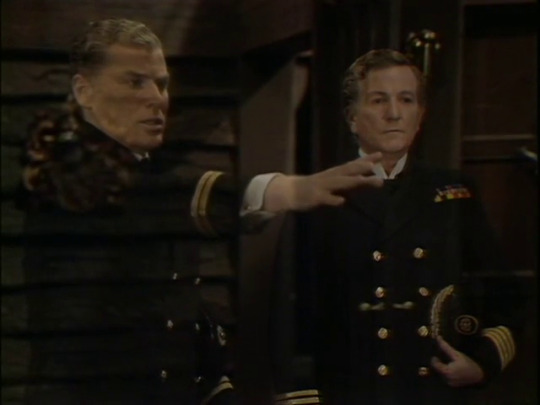
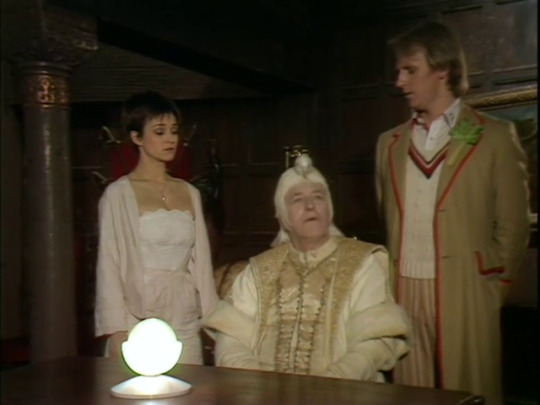
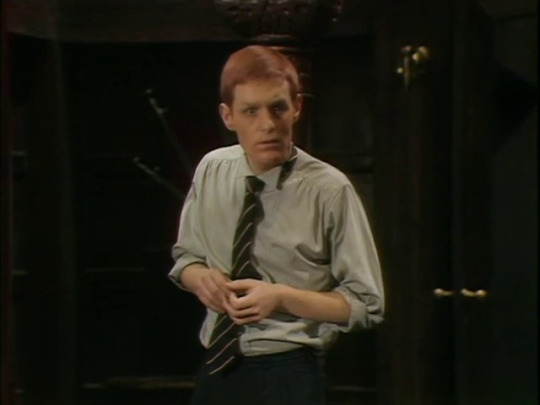
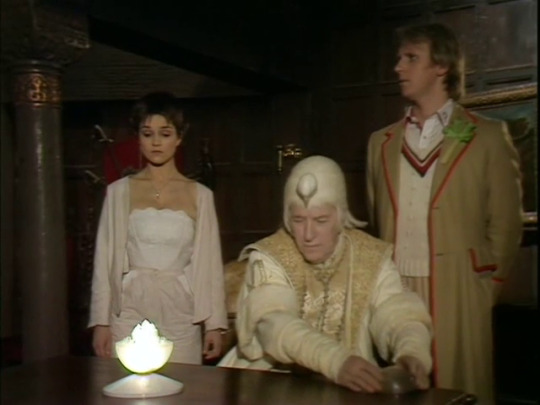

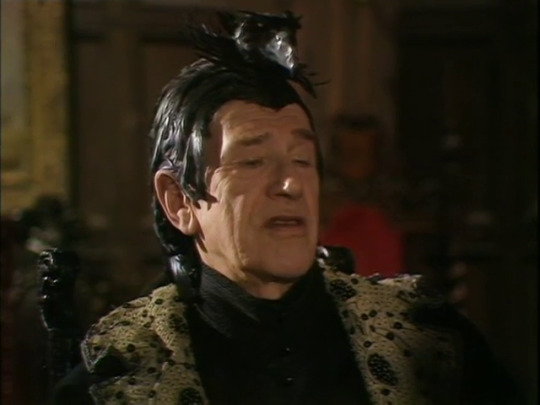
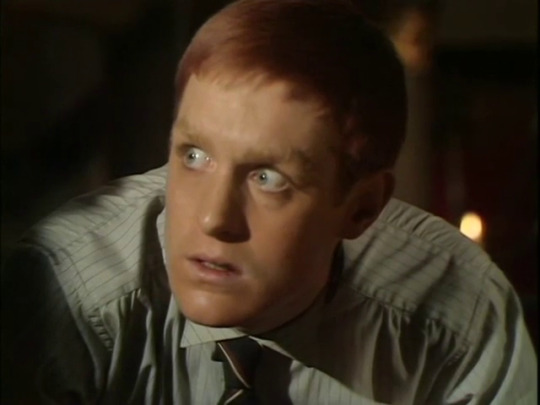
Enlightenment Episode 4 Screencaps, Part 15
#classic doctor who#5th doctor#tegan jovanka#vislor turlough#black guardian#white guardian#peter davison#janet fielding#mark strickson#valentine dyall#cyril luckham#enlightenment#screencaps
16 notes
·
View notes
Photo

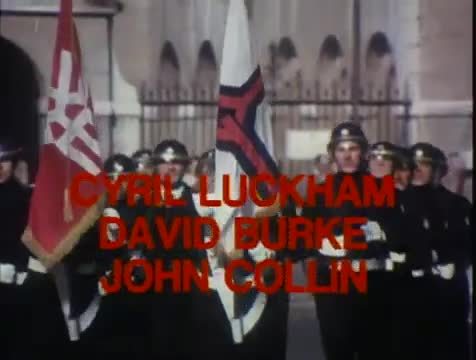
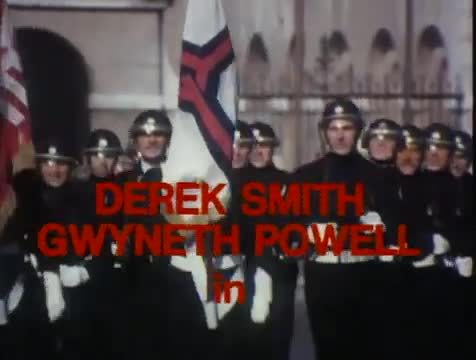
The Guardians - ITV - July 10 - October 2, 1971
Sci Fi / Political Thriller (13 episodes)
Running Time: 60 minuutes
Stars:
Edward Petherbridge as Christoper Hobson
Derek Smith as Dennis Norman
John Collin as Tom Weston
Cyril Luckham as Sir Timothy Hobson
Lynn Farleigh as Eleanor Benedict
David Burke as Dr. Benedict
Gwyneth Powell as Clare Weston
Robin Ellis as Peter Lee
Robert Morris as Inspector Arnold
Peter Howell as Geoff Hollis
Joan Heal as Miss Joan Quarmby
Dinsdale Landen as Dr. Mark Thorn
Anthony Bate as Raymond Barry
Graham Crowden as The Dirtiest Man
Richard Vernon as Dace
Michael Culver as Paul
Richard Hurndall as Sir Francis Wainwright
Robert Russell as Gibb
John Bryans as Bullmore
John Rhys-Davies as First Guardian
James Grout as Hobbs
Peter Barkworth as Quarmby
Ken Hutchison as Second Guardian
Windsor Davies as Shop Steward
#The Guardians#TV#ITV#Science Fiction#Political Thriller#1970's#Cyril Luckham#David Burke#John Collin#Derek Smith#Gwyneth Powell
2 notes
·
View notes
Text

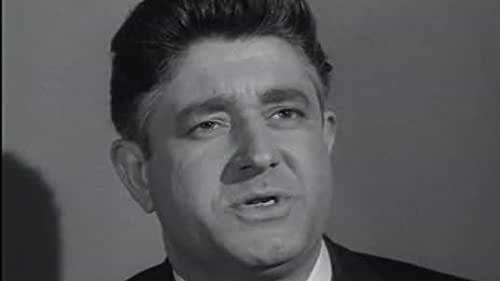
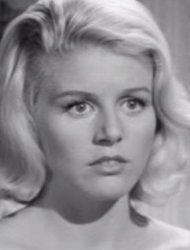
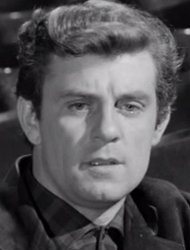

The Saint: Iris (2.8, ITC, 1963)
"I'll take you to the bank. We'll get a list of the serial numbers."
"Inspector, may I make a suggestion?"
"No."
"Ask a silly question..."
#the saint#iris#itc#leslie charteris#bill strutton#john gilling#roger moore#barbara murray#david bauer#ivor dean#cyril luckham#ferdy mayne#john ronane#tony wager#barry linehan#meadows white#april wilding#larry taylor#margaret nolan#he is here! Ivor Dean finally arrives as the permanent Inspector Claud Eustace Teal (although funnily enough he goes unnamed in this debut#episode; he is definitely Teal tho‚ per the end credits). Dean is immediately Teal‚ idk i just feel like he gets the part immediately; his#absolute disdain for Templar‚ the long suffering hangdog face‚ the refusal to even entertain the idea of humouring or empathising with the#civilians brought into the case.. oh his Teal may not be entirely book accurate‚ but he fully embodies this tv character as much as Moore#does Templar. this week's case concerns both a protection racket and blackmail‚ with a background of 60s theatre; Simon is very snobby#about the (fictional) play‚ as is p much everyone else (i thought it sounded interesting!). Bauer returns for hia third guest star stint#and baby John Ronane gets a couple of scenes‚ but of course the big attraction here is Barbara Murray. The Plane Makers was just beginning#its second series around this time (the series where Barbara joined the cast) but Babs was a genuine film star in her youth(er) so would be#well known to 60s audiences. she's wonderful of course (need it be said) and brings her usual louche charm and array of interesting hats to#the role. ironically‚ of the cast‚ it's probably Barry Linehan (here playing a gangland thug as he so often did on tv) who had the most#experience of the kind of budget experimental theatre the 'actors' in the episode are involved in
6 notes
·
View notes
Text
AUDIO: Alan Rickman in Rope - BBC radio drama
1983 radio adaptation of Patrick Hamilton’s 1929 play, rebroadcast after Rickman’s death in 2016. The BBC link no longer works but I was able to download from this site with no problem. (I just bought a copy of the play; this is nice to read along to.)
Cast: Alan Rickman as Rupert Cadell, Adam Bareham as Wyndham Brandon, Andrew Branch as Charles Granillo, Cyril Luckham as Sir Johnstone Kentley, Moir Leslie as Leila Arden, Christopher Good as Kenneth Raglan, and Olivier Pierre as Sabot. Producer: John Tydeman.
#alan rickman#adam bareham#andrew branch#patrick hamilton#rope 1948#that's my tag for all things rope#the hitchcock movie is almost the same just americanized
37 notes
·
View notes
Text
The Omega Factor (1979)
The Omega Factor is a British television series produced by @BBCScotland in 1979 and starring James Hazeldine and @Lou_Jameson. One series of 10 episodes were broadcast between June 13 and August 15, 1979.

Journalist Tom Crane (Hazeldine) possesses untapped psychic powers that bring him to the attention of the scientists who comprise Department 7, a secret "need to know only" government organisation which investigates paranormal phenomena and the potential of the human mind. The phenomena explored include hypnosis, brainwashing, extra-sensory perception, telekinesis, poltergeist phenomena, out-of-body experiences and spiritual possession.
Crane joins Department 7 as a means of finding and getting revenge on Edward Drexel (Cyril Luckham), a powerful rogue psychic who is responsible for the death of Crane's wife in an automobile accident. Crane suspects a deadly conspiracy by a mysterious organisation called Omega to take over the world using mind control. The members of Department 7 include physicist Dr. Anne Reynolds (Louise Jameson), an old friend of Crane's wife.
0 notes